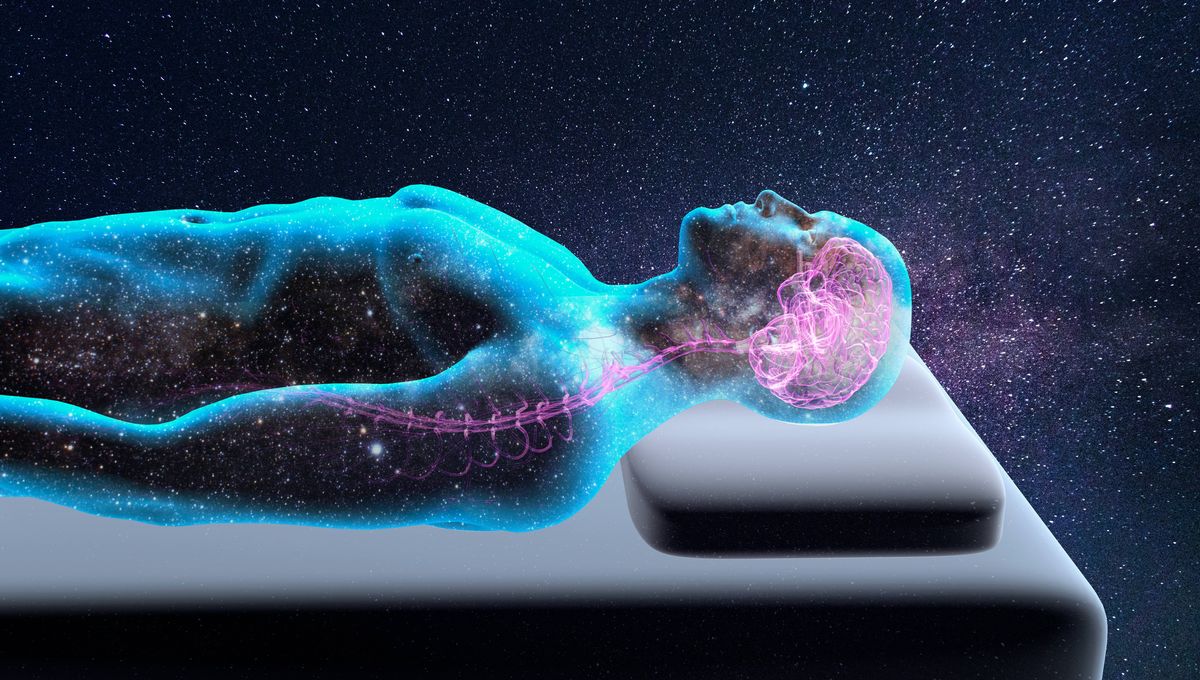
Scientists have been trying to find ways for dreamers to communicate with the waking world for decades, but to date, their efforts have been largely unsuccessful. However, a team of sleep experts think they may have found a way for lucid dreamers to “talk” while they sleep.
The term “lucid dreaming” was first coined in 1913 by Frederik Willem van Eeden, a Dutch writer and physician. It describes the phenomenon whereby a sleeping individual knows they are dreaming. In some cases, a lucid dreamer can even exert some control over the aspects of the dream, such as the actions of the dream characters, the narrative, or the environment.
According to research published in 2020, the number of studies focused on lucid dreaming rises by 5.6 percent each year, because this type of dreaming is so widespread among humans – surveys have shown that around 55 percent of people have experienced lucid dreaming at least once in their lives.
Although there is much we still do not understand about lucid dreaming, especially its neurobiology, we do know that it almost exclusively happens during REM sleep. Since the 1970s, researchers have been trying to find ways for lucid dreamers to communicate while in this deep sleep phase using various techniques. For instance, experiments with electromyography (EMG), which measures muscle responses or electrical activity in relation to nerve stimulation, have tried to decode the language of lucid dreams by measuring contractions in facial muscles.
Similarly, work with electroencephalography (EEG), which records brain activity, has shown that lucid dreamers can move objects on a screen. But all these existing experiments have limitations and often show mixed results. Moreover, researchers have still not found a way for a dreamer to communicate through speech.
This is where Michael Raduga, a sleep expert with Phase Research Center, and his colleagues may have a solution. Raduga has developed a “language” that lets people communicate while they are in REM sleep. The language is called “Remmyo”, and it is the first of its kind. It relies on specific facial muscle movements that occur during this state. According to Raduga, this new language can be learned during waking hours – as with any other language – and then anyone could potentially communicate with it while they sleep.
“You can transfer all important information from lucid dreams using no more than three letters in a word,” Raduga, who founded Phase Research Center in 2007 to study sleep, told Ars Technica. “This level of optimization took a lot of time and intellectual resources.”
Remmyo gets its name from the sleep state it was designed to work in, as well as “myo”, which is ancient Greek for “muscle”. According to Raduga, the language currently only has six letters with paired sounds, each of which is tied to contractions of specific facial muscles that can be recognized by EMG.
“Its basic vocabulary is around 200 commonly used words or commands consisting of no more than three letters,” Raduga and his colleague write in their study. Though there is currently no need to memorize them until they may be needed in lucid dreaming, the prospects are exciting.
“We can digitally vocalize Remmyo or its translation in real time, which helps us to hear speech from lucid dreams,” Raduga told Ars.
In his experiment, Raduga used a sleep laboratory at the Neurological Clinic of Frankfurt University in Germany. His research participants already knew Remmyo and had been “taught” how to enter a lucid dreaming state. Once in a lucid dream, the participants could communicate using this language and the EMG sensors would detect their muscle movements and translate them for the researchers.
Unfortunately, Raduga’s results were somewhat mixed. Due to a range of issues related to software failures, mispronunciations of Remmyo, and missing sounds, the decoding efficiency ranged from 13 to 81 percent. Despite this, the first phrase and word heard from dreaming subjects was “no war” and “freedom”.
Raduga’s work has since faced some skepticism from other researchers, but he and his team believe that more work can address these initial issues.
“Despite its limitations, the present research has demonstrated a proof of concept for using facial EMG signals and constructing languages based on them for transferring vocalization from [lucid dreaming] into reality, both in real time and in recordings,” they concluded in their study.
More information on recent work on lucid dreaming can be found here.
This study was published in Psychology of Consciousness: Theory, Research, and Practice.
Source Link: New "Language" Could Help Lucid Dreamers Communicate With The Waking World